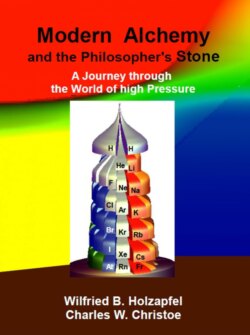Читать книгу Modern Alchemy and the Philosopher's Stone - Wilfried B. Holzapfel - Страница 45
На сайте Литреса книга снята с продажи.
ОглавлениеThe professor continued his explanation of the chart. “Below Earth’s crust lies the thick rocky mantle that I pointed out earlier. Then there is a liquid outer core, followed by a solid inner core. With enough observations, the geologists have concluded that the core mainly consists of an iron-nickel alloy that contains small additions of silicon, oxygen, and sulfur. They believe that the inside is hotter than the outside of the core, but that the pressure at that depth compresses the metal into a solid.”
Now it was Helen’s turn to ask a question, “Do we really know the temperature inside of Earth?”
“Different models suggest that the temperature in the center of Earth should be about 6000 °C,” Professor Wood answered. “However, we can even measure this temperature nowadays!”
“How can we do that?” Marie asked incredulously.
Professor Wood explained. “Well, by definition, the boundary between the outer liquid and inner solid core of Earth occurs right at the point where the pressure crosses the melting curve of the corresponding iron-nickel alloy. In the hypothetical phase diagram that we looked at earlier (Figure 14), the melting curve indicated that the melting temperature increases with increasing pressure. This is typical of most materials. It is also what we expect for the materials in Earth's core. From the models on the composition of Earth we know that the pressure at this depth is about 330 GPa. The melting curve of pure iron has been measured in the laboratory at pressures up to 220 GPa. By extrapolating the melting curve to 330 GPa, my friends have estimated11,12 that the melting temperature at that depth in Earth should be about 4700° C.
Helen was amazed. “That is fantastic!” she exclaimed.
“Not bad, right?” The professor smiled broadly. Then he added, “But to obtain a more accurate model of all the processes inside Earth, we would still like to know how reliable this estimate of temperature really is. The uncertainty in measuring the melting temperature of pure iron based on laboratory data is approximately plus or minus 300°C. The precise amount of nickel present in the alloy should not increase this uncertainty significantly. But adding oxygen, sulfur, and perhaps also magnesium to the iron-nickel alloy could cause the melting temperature of Earth's core to be lower by several hundred degrees!
“You see, if scientists measure something, they have to think about the accuracy or uncertainty of their measurement results.”
Marie was quite pleased by this whole discussion, but Helen was perplexed. “But what about the quintessence?” Helen asked. “Have you forgotten about that?”
“No, I have not,” Professor Wood replied. “But I felt that I needed the example of the wide range of pressures and temperatures inside Earth to be able explain the larger map of states for the universe to you. You might wonder how large the ranges on such a map might be compared with the conditions on our Earth!”
